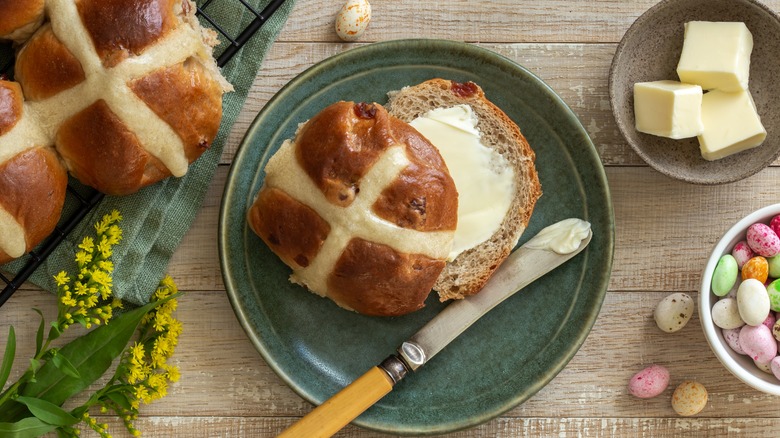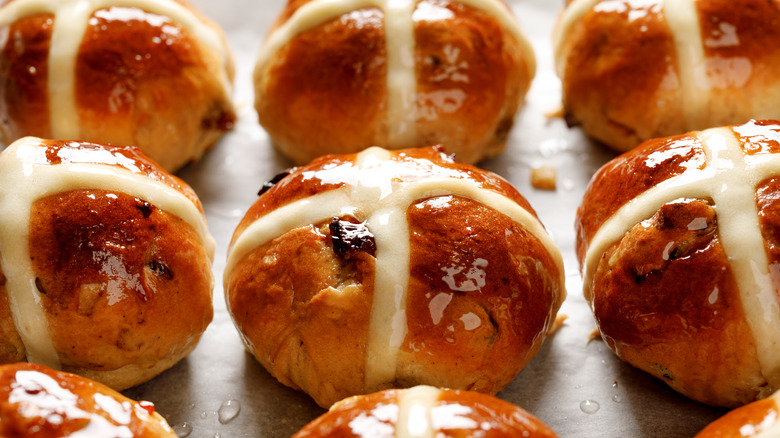How Hot Cross Buns Got Their Name (And A Dedicated Song)
While the exact origins of hot cross buns can cause disputes, the culinary theories are fun to consider. From monks carving crosses into dough or Roman chefs scoring Xs on bread, the stories of the recipe vary as much as the explanation for the corresponding song. The hot cross buns jingle is thought to have originated from a marketing campaign in the 1700s, with bakers calling out to street customers to buy their buns for a penny or two. You may recognize the tune from days blowing through a recorder in school or have heard the lyrics from young children around the Easter holiday.
Though hot cross buns have now found their way into the category of recipes linked with Easter, the cross design on the bread is thought to have originally been a pre-Christian pagan symbol. When honoring Eostre, the goddess of spring, Egyptian and Saxon worshippers would use cross-marked pieces of bread in ceremonies and rituals. Spring equinox marked a time of balance and was represented by a cross that could symbolize the four phases of the moon and the four seasons. For the Romans, crosses indicated horns of sacred animals, and the word bun comes from their word boun, meaning ox. The image of a cross can be found in many cultures, including those of Druids, Phoenicians, Greeks and Romans. Some of these decorated buns can be seen in a preserved bakehouse in Pompeii.
A bread for any observance
Early hot cross bun recipes have been linked to 12th-century Anglican monks who marked baked goods with crosses on Good Friday, also known as the Day of the Cross. In 1361, a priest made small cross-marked spiced cakes, and the baked treat became a tradition for those practicing stricter Easter rituals. At one point, hot cross buns made on Good Friday were fried and used as medicine as they were thought to have holy power, or strung in homes to ward off malicious energy. Yet in 16th-century England hot cross buns were made discreetly, as they became so intimately intertwined with Easter that bakers suspected of being Catholic were arrested under the protestant rule of Elizabeth I. Their defense if caught? The X in the dough helped ensure a better rise during baking. This reasoning was accepted, and the law was amended so that hot cross buns could again be made.
Today, you'll find bakers adding personal touches to traditional recipes, making crosses with icings or chocolate instead of the simple scoring or flour paste. While the spices found in hot cross bun recipes have been linked to the spices used to anoint Jesus after his death, all sorts of new ingredients from cocoa to citrus zest are now accepted. Regardless of whether you celebrate Easter with specialty foods like the Greek's tsoureki bread, hot cross buns make a delightful year-round treat, and religious or spiritual inclinings don't necessarily need to be your main concern.

